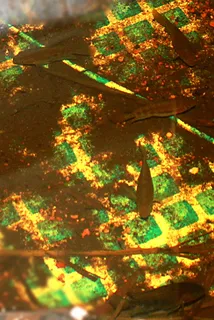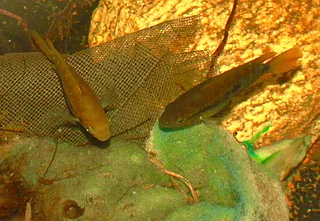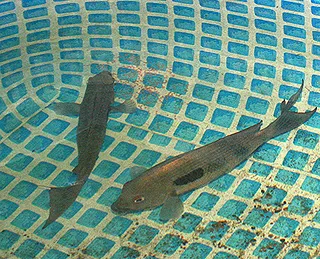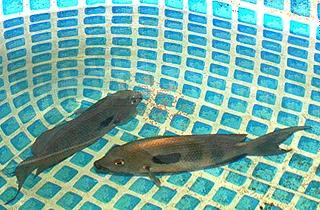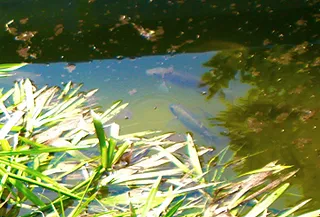First coast tropical fish, Dave's rare fish, tuic, and wetspot have them in frequentlyThose are really pretty and look similar to sajica. I think with them the difficulty might be finding them.
Breeding tropical/community fish in 200g pool during summer
- Thread starter arielucidates
- Start date
You are using an out of date browser. It may not display this or other websites correctly.
You should upgrade or use an alternative browser.
You should upgrade or use an alternative browser.
First coast tropical fish, Dave's rare fish, tuic, and wetspot have them in frequently
Thanks! I noticed Wetspot had them. They also have Nanoluteus and I'm thinking of going that direction since some of the other fish I've decided on are pretty small and Nanos stay even smaller than Myrnae
After some research these are the species I'm thinking of for the 250g
African Dwarf Frogs
Xiphophorus nezahualcoyotl (Mountain Swordtail) (I was told at the at the LFS to avoid really common live-bearers)
Some kind of Ricefish. The LFS said they sell really fast, are easy to breed but hard to get from wholesalers. I'm thinking Oryzias woworae (Daisy's Ricefish) or Oryzias latipes (Miyuki Blue Medaka Ricefish)... Those are both in stock at wet spot along with the Swords and Nanoluteus. If there's some kind of rice fish that would be much better I'm definitely open to hear about it as I still need to do more research on them.
Fire and Ice Paradise Fish? I saw this color morph at the LFS and am considering them since they would be more cold hardy but I find the color a lot more attractive than normal Paradise fish (they look like Honey Gouramis)... Wondering if they would bother the smaller fish, but in a 6.5' diameter pool I'm thinking they could claim some territory and the other fish will just stay out. I would probably only have one pair. I'd love to hear from someone who is actually raised paradise fish how they would do in this type of setting with the inhabitants I'm planning on.
Amatitlania nanolutea is what I'm thinking for cichlid because of their small size and peaceful nature.
Still plan to do White Clouds and/or Celestial Pearl Danios, and probably the Paleatus Cory (unless someone can suggest another cool water Cory that's a little more rare)
I'm hoping to have it so full of plants and live food sources that plenty of fry survive.
African Dwarf Frogs
Xiphophorus nezahualcoyotl (Mountain Swordtail) (I was told at the at the LFS to avoid really common live-bearers)
Some kind of Ricefish. The LFS said they sell really fast, are easy to breed but hard to get from wholesalers. I'm thinking Oryzias woworae (Daisy's Ricefish) or Oryzias latipes (Miyuki Blue Medaka Ricefish)... Those are both in stock at wet spot along with the Swords and Nanoluteus. If there's some kind of rice fish that would be much better I'm definitely open to hear about it as I still need to do more research on them.
Fire and Ice Paradise Fish? I saw this color morph at the LFS and am considering them since they would be more cold hardy but I find the color a lot more attractive than normal Paradise fish (they look like Honey Gouramis)... Wondering if they would bother the smaller fish, but in a 6.5' diameter pool I'm thinking they could claim some territory and the other fish will just stay out. I would probably only have one pair. I'd love to hear from someone who is actually raised paradise fish how they would do in this type of setting with the inhabitants I'm planning on.
Amatitlania nanolutea is what I'm thinking for cichlid because of their small size and peaceful nature.
Still plan to do White Clouds and/or Celestial Pearl Danios, and probably the Paleatus Cory (unless someone can suggest another cool water Cory that's a little more rare)
I'm hoping to have it so full of plants and live food sources that plenty of fry survive.
They get about the same size, males can hit 6", they also can't handle heat. Ime they will kill smaller fish when spawning. Myrnae wouldn't touch tetras or rainbows, even with fry. Nanos also spawn a lot less frequently and fry grow about an inch a year. Fry are additionally really fragile up to about 0.75". I was only getting one spawn a year and usually in February indoors. Unheated tank. Tried heating it and got no spawns for the remaining 3 years I had them. Everyone in my area that had them had the same experience .Thanks! I noticed Wetspot had them. They also have Nanoluteus and I'm thinking of going that direction since some of the other fish I've decided on are pretty small and Nanos stay even smaller than Myrnae
Last edited:
They get about the same size, males can hit 6", they also can't handle heat. Ime they will kill smaller fish when spawning. Myrnae wouldn't touch tetras or rainbows, even with fry. Nanos also spawn a lot less frequently and fry grow about an inch a year. Fry are additionally really fragile up to about 0.75". I was only getting one spawn a year and usually in February indoors. Unheated tank. Tried heating it and got no spawns for the remaining 3 years I had them. Everyone in my area that had them had the same experience .
Interesting. I'm actually more concerned about the water being too cold then too warm. So you've kept and bred both species? You're convincing me on the Myrnae. You've had males of both species reach 6 in? Fishbase and Seriously Fish list Nano as maxing out at about 2.5" and Myrnae at about 4"... I don't really want any fish bigger than that in this pond. You don't think Myrnae would bother even small community fish types like CPDs, White Clouds or Ricefish? What size tank were your Nanos in when they killed community fish during breeding. I would just get both species but I know they could interbreed, so I do have to pick just one. It is strange to hear of a Amatitlania that is so difficult to breed and raise!
I'm so torn... Just went and read a bunch of breeding accounts of Nanos and Myrnae and most of what I read is that Nanos are very mild mannered comparatively (e.g. they will bravely protect fry/eggs, but pick a small area and won't beat up other that stay out of that area) ... Everything I read says they tip out at 3" max too, which I prefer, so I'm confused about the 6" number. I read several accounts of Myrnae being just beasts when they are breeding. Nanos do sound to be more sensitive, a bit harder to breed, and the fry slower growing, but I'm hoping a big heavily planted pond with lots of very small community fish would suit them very well. Hopefully they fry would grow faster in there too with lots of space and natural and introduced live food sources. 250g with only tiny fish is a lot more space than most people use breeding such a small cichlid.
I'm also looking into to adding some kind of Pygmy Sunfish, like Everglades or Gilberti. Need to do more research.
I'm also looking into to adding some kind of Pygmy Sunfish, like Everglades or Gilberti. Need to do more research.
I wouldn't add elassoma, they'll very quickly get outcompeted by everything you're planning on putting in there. They are very timid and finicky with food, often needing live foods, which ofc being outside would help with, but their params are also the opposite of everything else you plan on getting.I'm so torn... Just went and read a bunch of breeding accounts of Nanos and Myrnae and most of what I read is that Nanos are very mild mannered comparatively (e.g. they will bravely protect fry/eggs, but pick a small area and won't beat up other that stay out of that area) ... Everything I read says they tip out at 3" max too, which I prefer, so I'm confused about the 6" number. I read several accounts of Myrnae being just beasts when they are breeding. Nanos do sound to be more sensitive, a bit harder to breed, and the fry slower growing, but I'm hoping a big heavily planted pond with lots of very small community fish would suit them very well. Hopefully they fry would grow faster in there too with lots of space and natural and introduced live food sources. 250g with only tiny fish is a lot more space than most people use breeding such a small cichlid.
I'm also looking into to adding some kind of Pygmy Sunfish, like Everglades or Gilberti. Need to do more research.
Fishbase gets it's lengths from max sizes RECORDED in the wild. Prey fish like these are seldom able to reach the sizes they do in captivity, and even less likely for these fish to be measured and put into a scientific database rather than be eaten when caught. 6" nanolutea was hearsay from Kevin at TUIC. I did have a 5" male though. As for myrnae:
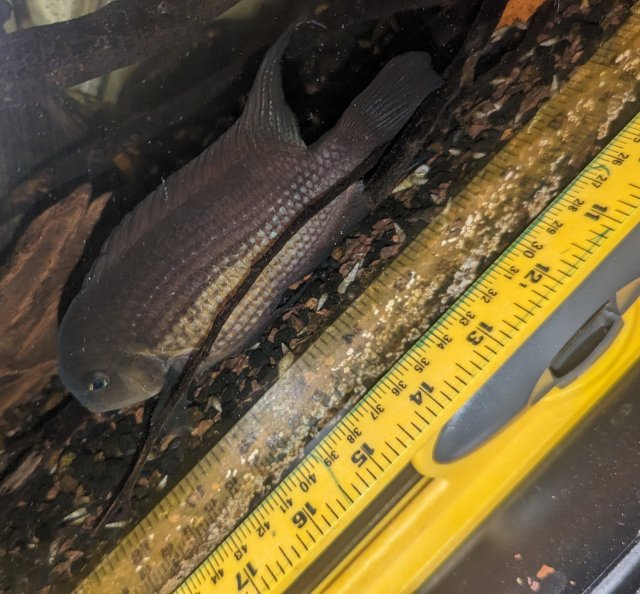
(Duanes can verify the 7" with his past male, if I pressed this guy up to the glass he'd probably give a more accurate measurement, but alas I cannot because while it is in my house, it is not my fish.)
I have kept and bred every species of amatitlania and cryptoheros except for altoflava and spilurus. Nanos need mature tanks with a lot for the fry to graze on. In spite of the fact that their stomach contents revealed something to the effect of 70% plant matter, my pair really liked protein, whether that came in the form of crickets, mealworms, or livebearer fry. Ironically again, myrnae have more of a varied diet, yet in my time keeping them they haven't gone after:
- inch long rainbows
- loaches
- siamese algae eaters
- tetras
- plecos
- mollies/swordtails
Another reason I'd say the nanos wouldn't make good pond fish is the fact that you're inevitably going to be catching them out and moving them inside. This poses two problems, one being that the stress of the move may compromise their immune systems, and the other being that you will need an equally mature setup to transfer the fry to. I know that sounds over the top, but nearly every time I've moved fry they have died off. The only occasions where fry survived (three individuals out of 400 fry) were being moved to densely planted setups or tanks that had been up for decades. There they went on to grow about an inch over the course of a year. In the span of the time you will have them outside, they will likely not attain enough growth to handle a move once you pull them in for the fall. Getting breeding individuals is also a bit of a hassle, as they only breed at about 2" or 2 years of age. Most online are sold at about half that size.
Amatitlania is actually split into two subgenera, being Amatitlania (kanna and nigrofasciata) and Bussingius (myrnae, septemfasciata, nano, alto, sajica). The bussingius species are for the most part very different from your traditional convicts.
Sajica is actually the closest to the "convict" lineage, but is still a weird one, as they regularly hit 6-10", and cannot handle the cold. Mine would go into shock when I tried to do cold waterchanges like I would on my other amatitlania. Took me too many cold waterchanges to realize there wasn't some weird disease running through my group of growouts, putting them through unnecessary suffering, only to realize that dunking them in water of a more comfortable temp calmed them down immediately. Their eggs are red, and they do not like company when spawning.
Nanolutea I've already talked about enough, altoflava-- not much is known about them but I have a few trade secrets I'm holding onto for myself.
Septemfasciata is probably the closest to actual convicts in terms of behavior. These also get big, as I have a 6.5" male in my fishroom right now, and have seen 8" males in person. They are extremely prolific and form colonies. These like hot water (I spawn mine around 83F), and will lay around 200-400 eggs every 2-3 weeks. These cannot be kept with smaller fish, as they are the only amatitlania that is known to actively hunt smaller fish. I proved that out the hard way. I refer to these as "convict premium" to my friends. Far more aggressive than trade strain convicts. I am actually keeping my male with a female umbee right now.
Myrnae ime also stay near the bottom a lot more. The nanos would come up to graze on floating plants. My male cleaned all of the duckweed out of his tank, and moved on to the salvinia, before stopping on the frogbit, which he of course, could not eat. My female died at about 6 years of age, so I rehomed the male.
Th
Thanks, you've given me a lot to think about. Thanks for your expertise. I may just not do any CA cichlids this year and stick to a SA since I tend to prefer them generally anyway. I found that Apistogramma borellii is found in several southern SA countries, even Uruguay, so I think I will try them in the main pond with all the littlest fish.
I also have like 7 tubs (maybe 50g?) so I may put some individual pairs or types of fish in those. Looking into Laetacacara species, because I've heard of those doing well in tub ponds and I love all the "Acara" species. Or maybe a pair of Festivum my LFS has now. Or maybe I'd do a small CA/Myrnae in one of them. The tank would be smaller but they could have them to themselves or with just some plain/feeder type guppies for live food. I'm also still tempted to try Keyhole Cichlids in one tub, since as I mentioned I love them. And because I could put them in for a shorter time (maybe end of June-end of August) since if they are the only inhabitants it'd be easy to put them in later and take them in earlier than my main pool(s)
Pretty much the only limit is my budget. Other than that I can just experiment with different species and see what does well and what will breed well for me. It'd be nice to have several different species that do really well for me and are in demand enough at the LFS to make it a yearly breeding project, keeping the best for myself overwinter and getting a new generation each year.
I was able to source some locally bred Betta Smaragdina, a wild type betta that is supposed to do well down into the low 60s. I'm also going to keep my eye out of Ocellatus Paradise fish, a different species of PF that is smaller, more peaceful and even more cold hardy.
And surprisingly I found some Murray River Australian Rainbowfish at the local Petco (the guy who works there and orders the fish actually is a fishkeeper and orders more interesting stuff than most Petcos). Those are good down to about 50F. I've heard Rainbowfish breed like crazy in tub ponds.
I wouldn't add elassoma, they'll very quickly get outcompeted by everything you're planning on putting in there. They are very timid and finicky with food, often needing live foods, which ofc being outside would help with, but their params are also the opposite of everything else you plan on getting.
Fishbase gets it's lengths from max sizes RECORDED in the wild. Prey fish like these are seldom able to reach the sizes they do in captivity, and even less likely for these fish to be measured and put into a scientific database rather than be eaten when caught. 6" nanolutea was hearsay from Kevin at TUIC. I did have a 5" male though. As for myrnae:
View attachment 1538333
(Duanes can verify the 7" with his past male, if I pressed this guy up to the glass he'd probably give a more accurate measurement, but alas I cannot because while it is in my house, it is not my fish.)
I have kept and bred every species of amatitlania and cryptoheros except for altoflava and spilurus. Nanos need mature tanks with a lot for the fry to graze on. In spite of the fact that their stomach contents revealed something to the effect of 70% plant matter, my pair really liked protein, whether that came in the form of crickets, mealworms, or livebearer fry. Ironically again, myrnae have more of a varied diet, yet in my time keeping them they haven't gone after:
- inch long rainbows
- loaches
- siamese algae eaters
- tetras
- plecos
- mollies/swordtails
Another reason I'd say the nanos wouldn't make good pond fish is the fact that you're inevitably going to be catching them out and moving them inside. This poses two problems, one being that the stress of the move may compromise their immune systems, and the other being that you will need an equally mature setup to transfer the fry to. I know that sounds over the top, but nearly every time I've moved fry they have died off. The only occasions where fry survived (three individuals out of 400 fry) were being moved to densely planted setups or tanks that had been up for decades. There they went on to grow about an inch over the course of a year. In the span of the time you will have them outside, they will likely not attain enough growth to handle a move once you pull them in for the fall. Getting breeding individuals is also a bit of a hassle, as they only breed at about 2" or 2 years of age. Most online are sold at about half that size.
Amatitlania is actually split into two subgenera, being Amatitlania (kanna and nigrofasciata) and Bussingius (myrnae, septemfasciata, nano, alto, sajica). The bussingius species are for the most part very different from your traditional convicts.
Sajica is actually the closest to the "convict" lineage, but is still a weird one, as they regularly hit 6-10", and cannot handle the cold. Mine would go into shock when I tried to do cold waterchanges like I would on my other amatitlania. Took me too many cold waterchanges to realize there wasn't some weird disease running through my group of growouts, putting them through unnecessary suffering, only to realize that dunking them in water of a more comfortable temp calmed them down immediately. Their eggs are red, and they do not like company when spawning.
Nanolutea I've already talked about enough, altoflava-- not much is known about them but I have a few trade secrets I'm holding onto for myself.
Septemfasciata is probably the closest to actual convicts in terms of behavior. These also get big, as I have a 6.5" male in my fishroom right now, and have seen 8" males in person. They are extremely prolific and form colonies. These like hot water (I spawn mine around 83F), and will lay around 200-400 eggs every 2-3 weeks. These cannot be kept with smaller fish, as they are the only amatitlania that is known to actively hunt smaller fish. I proved that out the hard way. I refer to these as "convict premium" to my friends. Far more aggressive than trade strain convicts. I am actually keeping my male with a female umbee right now.
Myrnae ime also stay near the bottom a lot more. The nanos would come up to graze on floating plants. My male cleaned all of the duckweed out of his tank, and moved on to the salvinia, before stopping on the frogbit, which he of course, could not eat. My female died at about 6 years of age, so I rehomed the male.
Thanks, you've given me a lot to think about. Thanks for your expertise. I may just not do any CA cichlids this year and stick to a SA since I tend to prefer them generally anyway. I found that Apistogramma borellii is found in several southern SA countries, even Uruguay, so I think I will try them in the main pond with all the littlest fish.
I also have like 7 tubs (maybe 50g?) so I may put some individual pairs or types of fish in those. Looking into Laetacacara species, because I've heard of those doing well in tub ponds and I love all the "Acara" species. Or maybe a pair of Festivum my LFS has now. Or maybe I'd do a small CA/Myrnae in one of them. The tank would be smaller but they could have them to themselves or with just some plain/feeder type guppies for live food. I'm also still tempted to try Keyhole Cichlids in one tub, since as I mentioned I love them. And because I could put them in for a shorter time (maybe end of June-end of August) since if they are the only inhabitants it'd be easy to put them in later and take them in earlier than my main pool(s)
Pretty much the only limit is my budget. Other than that I can just experiment with different species and see what does well and what will breed well for me. It'd be nice to have several different species that do really well for me and are in demand enough at the LFS to make it a yearly breeding project, keeping the best for myself overwinter and getting a new generation each year.
I was able to source some locally bred Betta Smaragdina, a wild type betta that is supposed to do well down into the low 60s. I'm also going to keep my eye out of Ocellatus Paradise fish, a different species of PF that is smaller, more peaceful and even more cold hardy.
And surprisingly I found some Murray River Australian Rainbowfish at the local Petco (the guy who works there and orders the fish actually is a fishkeeper and orders more interesting stuff than most Petcos). Those are good down to about 50F. I've heard Rainbowfish breed like crazy in tub ponds.
Last edited:
Thanks for the pictures. I should definitely revisit the idea of Rainbows. I had them briefly in the past and liked them. They seemed peaceful and they had beautiful colors. Maybe they would be the winners if I do a CA cichlid. Do you think they would breed in a planted tub about 2.5' in diameter and 2.5' deep?I have had many cichlids spawn in kiddy pools (including Herotilapia multispinissa (rainbow cichlids)) outside in summer
Below are those "rainbows spawning in a 400 gal Intex.
View attachment 1538373View attachment 1538374
Below Paretroplus maculatus
View attachment 1538376View attachment 1538377
Below Coptodon zillii in a 1000 gal Bestway
View attachment 1538378


